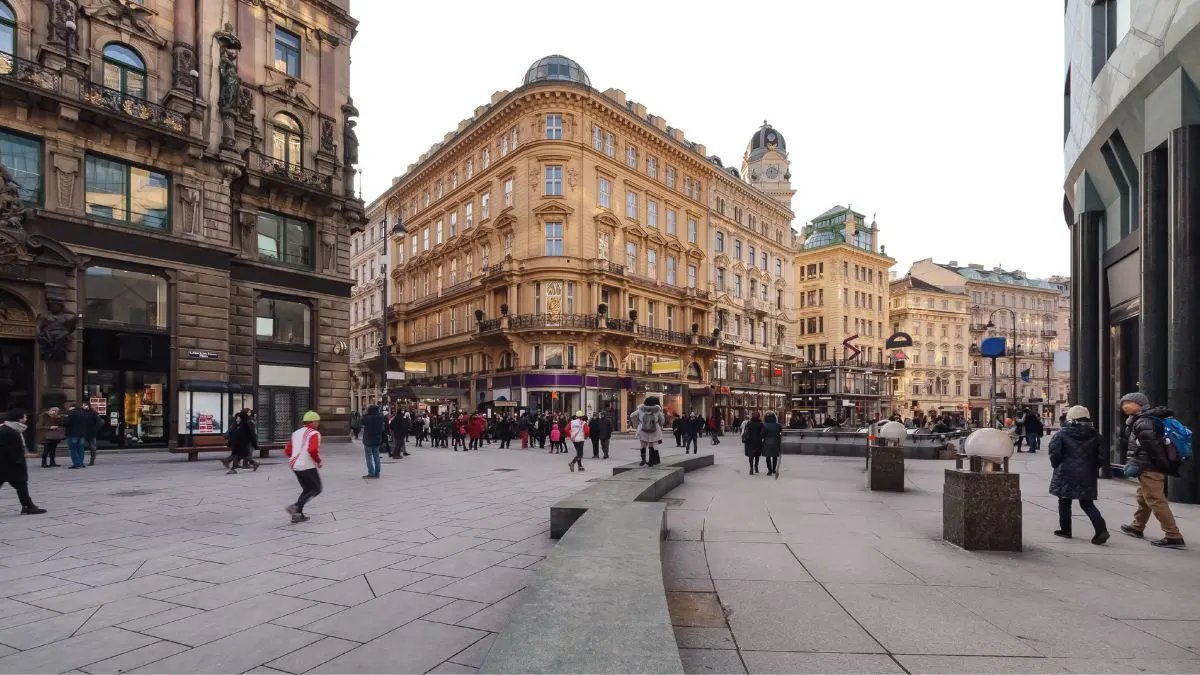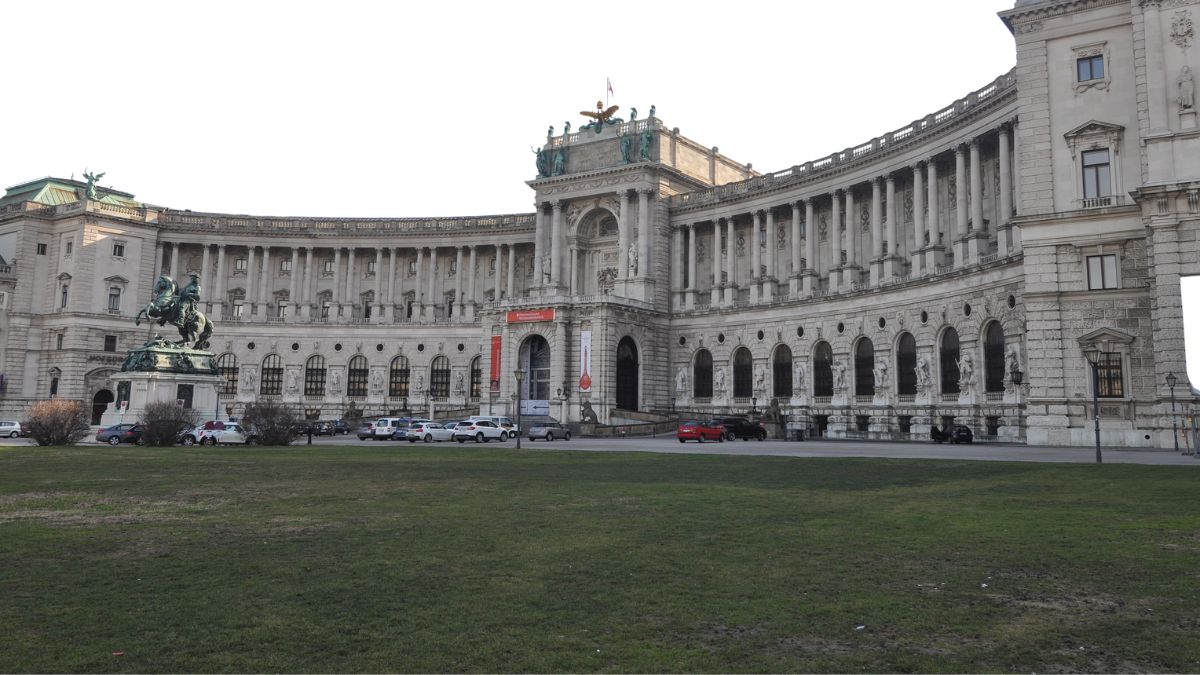Vienna, Austria’s cultural heart, is a city of timeless beauty, steeped in history and renowned for its world-class museums, imperial palaces, and vibrant music scene.
If you’re planning to travel to Vienna, prepare for an enchanting blend of old-world charm and modern vibrancy. With its grand boulevards, stunning architecture, and rich cultural offerings, Vienna is a city that offers something for everyone—from history lovers and art aficionados to music enthusiasts and foodies.
Often referred to as the “City of Music” due to its association with composers like Mozart, Beethoven, and Strauss, Vienna has long been considered a cultural and intellectual hub.
The city’s imperial past is mirrored in its majestic palaces and historic landmarks, while its modern side is reflected in its lively neighborhoods, contemporary art galleries, and innovative dining scene.
Travel To Vienna _ this guide will take you through the must-see attractions, practical travel tips, the best time to visit, and insider advice for an unforgettable journey.
5 Attractions to Visit in Vienna:
Vienna, the cultural heart of Austria, is a city of imperial palaces, classical music, and stunning architecture. Explore these 5 attractions to visit in Vienna to experience the city’s history, art, and charm.
1. Schönbrunn Palace and Gardens
A visit to Schönbrunn Palace is an absolute must for anyone traveling to Vienna. This sprawling Baroque palace, which was once the summer residence of the Habsburgs, is a UNESCO World Heritage Site and one of the most significant cultural landmarks in Austria. The palace’s opulent interiors are a testament to the grandeur of the Habsburg Empire, and the surrounding gardens are perfect for a leisurely stroll.
-
Tip: Don’t miss the Gloriette, an elevated structure in the gardens that offers stunning views of both the palace and the city of Vienna.
2. Hofburg Palace and the Imperial Apartments
The Hofburg Palace, located in the heart of Vienna, served as the imperial residence of the Habsburgs for over 600 years. Today, it is home to several museums, the Austrian National Library, and the Sisi Museum, dedicated to the life of the iconic Empress Elisabeth of Austria. The Imperial Apartments are particularly fascinating, offering a glimpse into the lives of the royal family.
-
Tip: If you’re interested in equestrian culture, be sure to visit the Spanish Riding School, located within the palace complex. The school is famous for its Lipizzaner horses and the classical riding performances that are held throughout the year.
3. St. Stephen’s Cathedral (Stephansdom)
One of the most recognizable symbols of Vienna, St. Stephen’s Cathedral is a magnificent Gothic structure located in the city’s historic center. The cathedral’s towering spire dominates the skyline, and its intricate façade and colorful roof tiles make it a must-see for visitors. You can also climb the 343 steps to the Stephansdom Tower for panoramic views of the city.
-
Tip: Explore the cathedral’s underground catacombs, where you’ll find the remains of past generations of Viennese royalty.
4. Belvedere Palace and Art Museum
The Belvedere Palace is another stunning Baroque landmark in Vienna, housing the Belvedere Museum, which boasts an impressive collection of Austrian art, including works by Gustav Klimt, Egon Schiele, and Oskar Kokoschka. The palace itself is divided into two sections—the Upper Belvedere and the Lower Belvedere—both of which offer beautiful gardens and spectacular art exhibitions.
-
Tip: Take time to stroll through the expansive gardens between the two palaces, where you can enjoy both the art and nature.
5. Prater Park and the Giant Ferris Wheel
For those looking to enjoy some outdoor fun, Prater Park is a large public space that combines recreational activities with historical charm. The highlight of the park is the Giant Ferris Wheel (Riesenrad), which was built in 1897 and offers stunning views of Vienna. The surrounding area is filled with walking paths, amusement rides, and cafes, making it a perfect place to relax and unwind.
-
Tip: Visit the Prater Museum to learn about the history of the park, which dates back to the 18th century.
Vienna’s Culinary Scene: From Traditional Dishes to Modern Innovation:
Vienna is a haven for food lovers, with a culinary tradition that spans centuries and continues to evolve. The city’s food scene combines traditional Austrian fare with contemporary global influences. Whether you’re savoring a piece of classic Sachertorte or enjoying a meal at one of the city’s Michelin-starred restaurants, Vienna offers an unforgettable dining experience.
1. Wiener Schnitzel
Arguably the most iconic dish in Austrian cuisine, Wiener Schnitzel is a breaded and fried veal or pork cutlet that is typically served with potato salad, lingonberry jam, and a lemon wedge. It’s a must-try dish for anyone visiting Vienna.
-
Tip: Head to Figlmüller, a restaurant known for serving one of the best Wiener Schnitzels in the city.
2. Sachertorte
A trip to Vienna would not be complete without trying Sachertorte, a decadent chocolate cake that was invented in the 19th century by Franz Sacher. The cake is made from a dense chocolate sponge, apricot jam, and a glossy chocolate glaze. It’s typically served with a dollop of whipped cream.
-
Tip: The Hotel Sacher is the place where the original Sachertorte was created, so don’t miss the chance to try a slice at its birthplace.
3. Viennese Coffee
Vienna is renowned for its coffee culture, and no trip to the city is complete without sampling a traditional cup. Viennese coffee is typically served as a Melange, similar to a cappuccino, but often with a slightly sweeter, smoother flavor. The city’s historic coffeehouses, such as Café Central and Café Demel, have long been gathering spots for artists, writers, and intellectuals.
Shopping in Vienna: From High-End Fashion to Local Markets:
Vienna offers a diverse shopping scene, with everything from luxury boutiques to charming local markets. Whether you’re looking for the latest fashion trends or a unique souvenir, the city has something for every shopper.
1. Graben and Kohlmarkt
For luxury shopping, head to Graben and Kohlmarkt, two of the city’s most exclusive streets. Here, you’ll find international brands like Louis Vuitton, Chanel, and Gucci, as well as high-end Austrian designers.
2. Naschmarkt
For a more local experience, visit the Naschmarkt, a bustling market where you can purchase fresh produce, spices, and artisanal goods. It’s also home to a wide array of food stalls offering everything from sushi to traditional Viennese pastries.
3. Mariahilfer Strasse
For more affordable shopping, Mariahilfer Strasse is Vienna’s largest shopping street, lined with department stores, fashion chains, and boutiques.
Read Next: Travel To Singapore | Top Attractions and Hidden Gems
How to Get Around Vienna:
1. Public Transportation
Vienna has an efficient and comprehensive public transportation system that includes U-Bahn (subways), trams, buses, and trains. The Vienna Card provides unlimited access to public transport, as well as discounts on museums and attractions.
2. Walking Tours
The city center of Vienna is compact and pedestrian-friendly, making it ideal for walking tours. Many guided tours are available, which focus on the city’s history, architecture, and local life.
3. Cycling
Vienna is a bike-friendly city, with dedicated bike paths and bike-sharing programs available throughout the city. Biking is an excellent way to explore the city at your own pace.
Best Time to Travel to Vienna:
The best time to travel to Vienna is during the spring (April to June) and fall (September to October), when the weather is mild and the city is less crowded. Winter (December) is also a magical time to visit, with Vienna’s famous Christmas markets filling the streets with festive cheer.
Final Thoughts: Magic of Vienna:
From its royal palaces and stunning museums to its vibrant coffee culture and culinary delights, Vienna is a city that offers something for everyone.
Whether you’re exploring its imperial past, savoring its traditional dishes, or experiencing its lively cultural scene, Vienna is a city that will leave you captivated.
Plan Your Trip:
Are you ready to immerse yourself in the history, art, and charm of Vienna? Start planning your trip now and prepare to discover all the beauty that this magnificent city has to offer.
From its opulent palaces to its world-class museums and culinary delights, Vienna is waiting for you.
FAQs:
Q1: When is the best time to visit Vienna?
The best time to visit Vienna is during the spring and fall months (April to June and September to October) when the weather is pleasant and there are fewer tourists.
Q2: How do I get from Vienna International Airport to the city center?
The City Airport Train (CAT) takes you directly to the city center in just 16 minutes. Alternatively, taxis and buses are also available.
Q3: Is Vienna safe for tourists?
Yes, Vienna is considered one of the safest cities in Europe for tourists. As always, exercise common sense and take usual precautions in busy tourist areas.
Q4: Can I explore Vienna on foot?
Yes, Vienna is a pedestrian-friendly city, with many attractions located close to each other. Walking tours are a great way to explore the city.
Q5: Are there day trips from Vienna?
Yes, popular day trips include visiting the Wachau Valley for wine tasting, the town of Bratislava in Slovakia, and the beautiful Lake Neusiedl.


